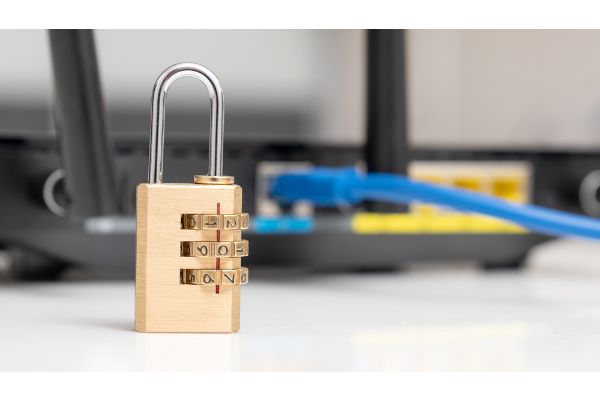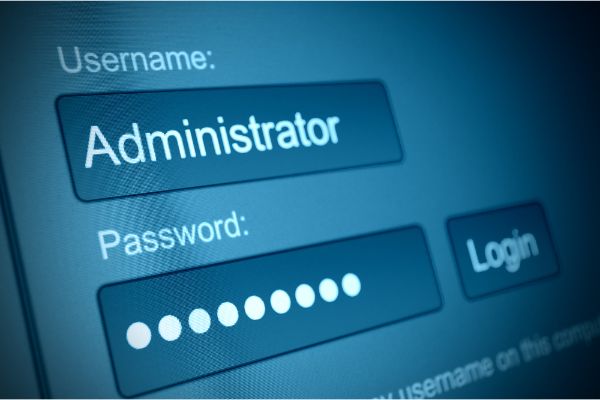Disclaimer: This post may contain affiliate links, meaning we get a small commission if you make a purchase through our links, at no cost to you. For more information, please visit our Disclaimer Page.
Netgear makes a wide variety of devices for computers, and some of their most popular products are their routers. The router is what takes the single signal that you get from your internet service provider and brings it into different parts of the home so that all devices can connect to it at once.
Like many pieces of equipment that send and receive signals from the larger internet, the router can be vulnerable to attacks from bad actors, particularly if it is not secured properly. One of the most basic ways that users can make their routers secure is by setting up passwords. This provides a layer of protection that guards the router’s settings.
In some cases, users might notice that their router asks for a password. Although this is normal, it should not do this if you haven’t yet set up your network, or if you didn’t set a password for it. At other times, it may seem to ask for a password almost continuously.
Either of these problems can lead to some frustrations in getting your device set up, and we will go over some of the common reasons for both in our article. We will also cover why your password might not be working as it should, how to find your login credentials, and how to turn off some of these administrative features.

Table of Contents
Why Is My Netgear Router Asking for a Password?
There are some issues that might cause your Netgear router to ask for a password when it should not. Before we get into that, we should remember that it is normal to ask for a password when you are setting up the network initially.
All routers come with default usernames and passwords that you can use in order to get into the system. Once there, you can set up your own credentials as part of setting up the network as a whole.
It could also be the case that your router is asking for a password in order to get into the system settings. However, it is also true that the router may want you to enter a password to get devices to connect to Wi-Fi in the home.
These are different but related things, and the fixes we might suggest for either of them should work to solve the issue. This is slightly different from the router regularly asking for a password, but that can happen too. We will cover that in a later section. For our purposes, we will also assume that the network is set already, with no need to ask for any kind of initial password.
If your router asks for a password after many days of not needing you to enter it, it is a good idea to turn off the router to see if the problem persists. If it does, you may wish to reset the network entirely and set it up again.
Although the solution could be as simple as trying to change the admin password, it is best to try these methods first. There could be some security concerns that you need to address first, so it is not recommended to change the password yet.
Should you be redirected to your router’s login page with a prompt to change the password, the first thing you should do is check firewalls or scan your network for any abnormalities. If your router is protected by a password, any breach should be unlikely.
However, it is still possible, and it is a good idea to see if things are safe before you change the password to something else.
You can also change it back to your previous password if you think this is a temporary glitch. Routers do lose connections sometimes, and when they do, some of the settings can get a bit scrambled in the process.
A password authentication can also happen if your network is not set correctly. While this should not be an issue most of the time, we touched on how some settings can get deleted or rolled back by accident. This will usually happen if the router loses connection for a long time, but it may be possible to face this issue even with short drops, too.
Check your network settings to make sure everything looks as it should. If you find any discrepancies, address these issues, restart the router, and see if the changes take effect.
Why Does Netgear Router Keep Asking for a Password?
This problem differs somewhat from the one we addressed already. In the section above, we assume that there is one time where the router suddenly asked for a password, even though the whole network had been working fine for days, weeks, or months prior to that point.
In this section, we will explore what might be prompting the router to ask for a password consistently, even if you’ve already dealt with it the first time and thought everything was fine.
Your router could ask you to provide authentication each time you want to connect a device to the internet, or it might ask you for one right in the middle of browsing and other activities. In either case, this points to some kind of network issue that you might need to fix.
The first reason this could happen is that your provider has messed with some settings accidentally. This could cause your router to function incorrectly, and one way it may do so is by seeming to need constant verification that you are a person who should be connected to the network you set up.
Many internet service providers need to tweak things regularly in order to provide the best quality of service that they can for their customers. Most of the time, this process goes along just fine. ISPs like to perform these operations in the middle of the night for most people, as it means there is less of a chance that they interrupt any customers who might need to use the internet.
This all involves connecting or disconnecting modems from the internet, making changes, and adding improvements to how the hardware functions. There are times when this can cause instability with specific routers. To make sure this is not the case, you should contact your ISP to see if there have been any recent updates.
If you’re getting this prompt even while browsing, there is likely a connection issue at play. This could also be related to your ISP, but it could be a problem on your end as well.
The prompt is popping up because an unstable connection is having trouble keeping pace with the web. The settings are glitching in and out constantly, and the router thinks it needs to verify the identity of your device each time this happens.
Why Is My Netgear Wi-Fi Password Not Working?
Your Wi-Fi password may not allow your devices to connect, and this can be true even if you know the password you are entering is supposed to be the correct one.
In other cases, you may not be able to reach the IP that helps you get into your router settings at all. Both issues could be related to your password not working, and there are some options you can try in order to solve the problem.
1. If you do need to get into the settings on your router, disable all browser extensions first. Some extensions can mess with your ability to reach the router login page.
Athough you could figure out which ones might do that, it is easier to disable all of them temporarily. You can turn everything back on when you are done.
2. Don’t use a saved password for this kind of thing. Although that might make sense, your router might be trying to log into the system automatically using an older password that is no longer valid.
To be clear, this would be an administrative password to get into the router itself. Your Wi-Fi network password is different, and most users do want devices to make use of that one automatically.
3. You can temporarily disable antivirus software. This software is helpful to have, but it can block access you might need in order to view or change the router’s settings. Be sure to reactivate this once you are done.

How Do I Find My Netgear Admin Username and Password?
You can retrieve your admin username and password from Netgear using password recovery or by setting the router to factory defaults. There is a standard password that is used if you have just purchased your Netgear router. For password recovery, you can follow these steps:
- Go to the login page on the web as you normally would. When prompted to input your credentials, hit ‘Cancel’ instead.
- Click on ‘Password Recovery’ in the new window.
- Find your router’s serial number printed on the side of the unit. Enter it into the appropriate text box.
- Click ‘Continue’ to answer security questions. Go forward from this window to see your admin username and password displayed.
How Do I Turn Off the Password on My Netgear Wi-Fi Router?
There may be some cases where you would like to disable the password entirely. To do so, login to your router using the method we’ve gone over above. Find the ‘Advanced’ section, and you should see something about password settings in it. By default, this value should be set to ‘On’, but you can turn it off manually.
Conclusion
Different Netgear routers come with various features, but most of them will function in similar ways when it comes to logging into or changing the settings.
Lost or weak connections can cause issues with these settings, and some of those problems could cause security confusion, password prompts, and other things. You can do some simple resets to see if the issues crop up again, and there are more in-depth steps you can take, too.
